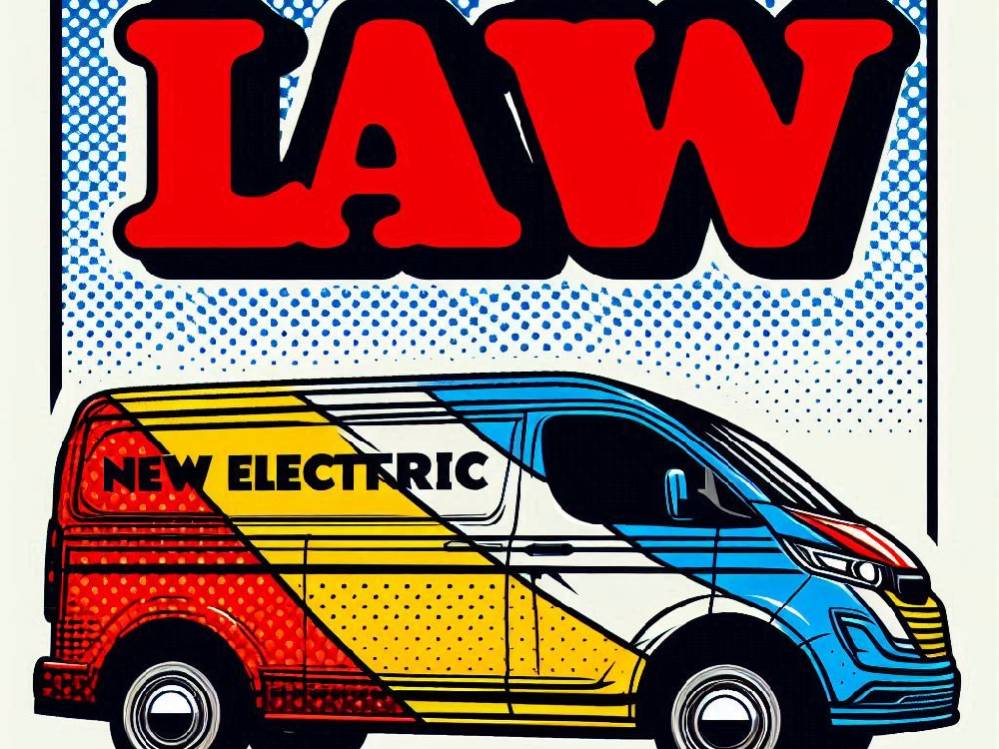Introduction
Could this be the change electric van drivers have been waiting for?
After all, for years, drivers of electric vans in the UK have faced an unusual hurdle.
Unlike petrol or diesel vans, electric vans over 3.5 tonnes face stricter rules.
Drivers need an extra five hours of training — even with a standard Category B licence.
That could all be about to change.
The UK government is proposing to scrap this training requirement entirely.
Here’s what this means for you.
- The five-hour training rule could soon be gone for good
- Electric van drivers may get the same rights as diesel van drivers
- Towing limits could also be aligned
- Fleet operators may save time and money
- This may reshape the van insurance market in 2025
What’s The Current Law For Electric Van Drivers?
Let’s start with the basics.
Currently, if you drive an electric van over 3.5 tonnes, you’re required to complete five extra hours of training.
This rule ensures drivers are properly prepared to handle heavier electric vehicles safely.
Even if you already have a full car licence.
Why?
Because electric vans are heavier due to battery packs.
To compensate, the law lets them weigh up to 4.25 tonnes — but only if you take that extra training.
It doesn’t apply to petrol or diesel vans.
So in reality, drivers of cleaner, greener vans face more red tape.
That’s not exactly encouraging for people trying to switch to zero-emission vehicles.
Think about it: the government wants to promote electric vehicles — but makes them harder to drive.
Still confused about whether you’re legally driving a van or car?
Check out this guide on van classification and insurance rules.
What Exactly Is The UK Government Proposing?
Here’s where things get interesting.
On 25 February 2025, the Department for Transport (DfT) announced a proposed rule change.
If approved, it will:
- Scrap the extra five-hour training requirement for Category B licence holders
- Align towing regulations between electric vans and internal combustion engine (ICE) vans
- Come into force by Spring 2025, pending Parliamentary approval
Put simply?
The goal is to make electric van rules the same as petrol and diesel van rules.
No extra hoops. No second-tier treatment.
In other words: electric van drivers may finally be treated equally.
The DfT says this is part of a wider move to eliminate barriers to electric vehicle adoption.
And for businesses relying on vans every day, this could be a big win.
Need a refresher on why compliance still matters?
Here’s a breakdown of why proper vehicle compliance is crucial for road safety.
Why Is This A Big Deal For Electric Van Drivers And Businesses?
Let’s not sugar-coat it.
Most van drivers don’t have time for red tape.
Whether you’re a self-employed plumber or managing a fleet of 100 vans, one thing’s clear.
You need your vehicles on the road — not stuck in training queues.
Moreove, with over 5 million vans on UK roads and one in ten workers depending on them, policy changes carry serious weight.
Even small adjustments can ripple through the economy, affecting businesses and livelihoods nationwide.
Removing the training requirement could:
- Lower costs for small businesses
- Speed up electric van adoption
- Eliminate confusion over who can drive what
- Reduce emissions with more eco-friendly fleets
Fleet managers especially stand to benefit.
Why?
Because training costs add up.
A five-hour session for multiple drivers isn’t just a line in the budget — it’s a serious logistical pain.
For many, this change won’t just be convenient — it’ll be transformational.
Want to know how else your van could be affecting your premiums?
Don’t miss this article on how telematics devices can save you money.
Logistics UK Speaks Out — What Do The Experts Think?
This isn’t just a driver issue.
Industry leaders are paying attention — and speaking up.
Logistics UK, a major freight and transport trade association, has welcomed the proposed changes.
Their Senior Policy Manager, said this:
“Removing the need for additional training to operate electric vans and aligning towing regulations with equivalent sized ICE vans will help our members… speed up the adoption of electric vehicles.”
That’s not just PR talk.
Logistics UK has long been part of the Zero Emission Van Plan coalition.
They’ve argued the current rules are a barrier to progress, especially for small operators trying to go electric.
With these changes, they say the UK could finally achieve regulatory alignment — a key step in fleet electrification.
Want to know how van insurance is shifting with these industry changes?
Read this breakdown of 2025 premium trends.
What Could This Mean For Electric Van Insurance?
So, why should you care?
Because this isn’t just about training.
It’s about shifting the entire landscape — including how van insurance works in the UK.
For starters, if more drivers switch to electric vans, insurers will have to respond.
As more data is collected on electric van usage, premiums may gradually stabilise or even drop.
In fact, several providers are already reassessing risk models to accommodate zero-emission commercial vehicles.
That’s not all.
Because the proposed rules remove the training requirement, fewer drivers will be classified as “restricted” or “unqualified.”
This change could eventually streamline policy terms, especially for smaller businesses with fleet coverage.
Even so, don’t assume that insurance costs will immediately plummet.
Electric vans still present unique repair costs, particularly due to expensive battery components.
Nonetheless, the growing adoption of these vehicles may help push insurers toward more competitive pricing.
In short, barriers are falling, and the insurance industry will have to evolve.
Curious about how to lock in better rates right now?
Check out our expert guide on finding the cheapest van insurance options.
What Happens Next? Timeline And Expectations
At this point, you’re probably wondering — when will the new rules kick in?
According to the Department for Transport, the regulations were laid before Parliament in February 2025.
If approved, they are expected to take effect by spring 2025.
Until then, the current law stands.
In the meantime, drivers are still required to complete the five-hour training course if operating electric vans above 3.5 tonnes.
That said, forward-thinking businesses should begin preparing now.
After all, these changes could shift operational norms and licensing requirements in a matter of months.
So what should you do?
- Review your current van fleet
- Assess training schedules
- Speak to your insurance provider
- Consider the long-term cost advantages of transitioning to electric
Don’t wait until the rule changes — be ready before it does.
Conclusion
A Turning Point for Electric Van Equality.
As we’ve seen, this proposed change goes far beyond licensing bureaucracy.
It’s about modernising outdated rules, supporting businesses, and opening the door to cleaner, more accessible transport.
If implemented, these reforms will:
- Eliminate a major logistical headache
- Reduce unnecessary training costs
- Encourage faster electric van adoption
- And potentially lead to cheaper van insurance across the board
Granted, the full impact remains to be seen.
However, momentum is clearly building — and the van insurance industry is watching closely.
With fewer obstacles ahead, now is the time to get prepared.
So whether you’re a sole trader, delivery firm, or large fleet operator, keep your eyes on Parliament this spring.
Because if the law passes, the road ahead could get a whole lot smoother.
You might also like:





